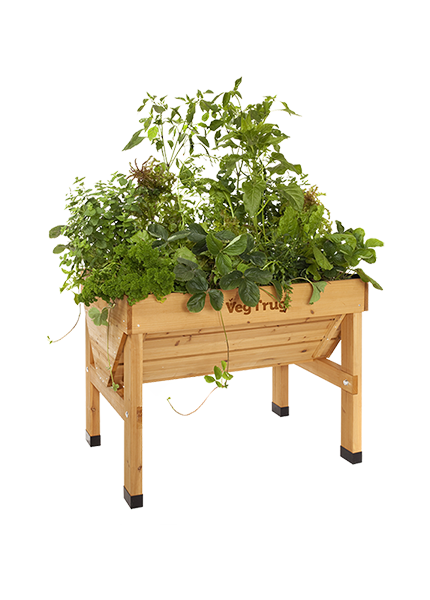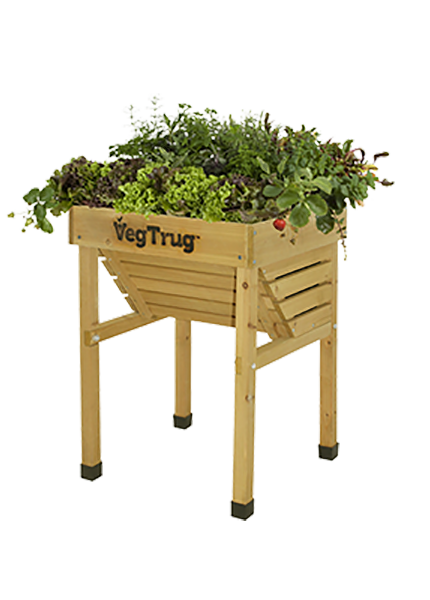As well as being really good for you, runner beans are easy to grow too. Most need support in the form of bamboo canes or wigwams, but a few smaller varieties are perfect for the VegTrug.
Read more on how to grow runner beans below.
Runner beans like rich and deep soil, so plant them in a long row towards the centre of the VegTrug, where it is deepest. They’ll also need a good sunny spot, but if growing in a container you might need to move this out of full sun on the hottest days. For large containers you could also choose a dwarf variety that can grow beans but without needing canes for support.
You can start to germinate your plants by growing them in pots indoors in spring, before moving them outdoors after the last frosts.
Outside, sow your runner beans in early summer about 5cm below the surface and about 20-25cm apart. Beans also need canes for support so put tall sticks in the soil as soon as you see the first shoots.
Some people tie their canes together to form a wigwam-shape to give their growing beans good support. In the ground you might need canes up to 3m high, whereas in a heavy container, a 6ft cane wigwam will support the climbing varieties. If space is an issue, you can create an A-shape or X-shape from bamboo.
But in general runner beans are really easy to care for vegetables. Once you know how to grow runner beans, You can easily have a season-long supply
Beans need water so keep them well watered especially in a dry season. Mulch with compost to help lock in moisture and spray the flowers with water occasionally.
Pinching off the top buds once the beans reach the tops of the canes will result in bushier growth.
You also can improve your chances of getting a good crop by having bees pollinate the beans. Adding a VegTrug bee bar encourages non-stinging bees to your container.
Unfortunately, pests and other problems are all part of learning how to grow runner beans. Slugs and snails will find your runner beans tasty. Cover the beans with a net or try defences such as eggshells or sawdust as soon as you’ve planted the seeds.
Runner beans can also suffer from rust, a fungal disease that shows itself as orange or black blisters. If this happens remove the affected leaves or plants and dispose of, but not in the compost which can increase the spread of spores to other areas.
Black bean aphids can infest your beans too. You can try to fix the problem by removing the affected leaves or the bugs themselves when there’s just a few. You might also see common green shield bugs, but these (as opposed to the southern green shield bug) are not harmful to plants.
You can usually harvest runner beans around mid-summer, depending on the variety. Choose young beans that are around 20cm long and harvest every couple of days or the pods will become mature and stop growing.
Eat them fresh, or blanche and freeze them.
How to grow runner beans is part of the VegTrug Grower’s Guide.

